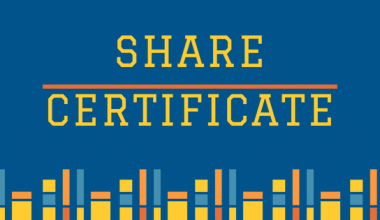Naked calls are investment strategies whereby an investor writes (sells) open market call options and without possessing the underlying security. Read on to know more about selling naked calls and what is all about.
Understanding Naked Calls
naked calls allow an investor to receive premium revenue without selling the underlying security. Basically, the only reason for writing an uncovered call option is to receive a premium.
It is dangerous by definition because there is limit upside profit potential and, in theory, limitless downside loss potential. In actuality, the option writer’s maximum gain is the upfront premium, which normally credits to their account. As a result, the writer’s purpose is to have the option expire worthless.
The maximum loss, on the other hand, is potentially unlimited since there is no restriction on how high the underlying security’s price might rise. Furthermore, depending on the risk tolerance and stop-loss settings. The seller of the options will most likely purchase them back before the underlying price rises too much over the strike price.
Making Use of Naked Calls
Again, writing uncovered calls carry a significant risk of loss. Alternatively, investors who are confident that the underlying security’s price. Generally, a stock, will decline or remain unchanged can write call options to receive the premium. Moreover, if the stock price remains below the strike price. Between both the time the options are put and their expiry date. Then the option’s writer retains the entire premium minus commissions.
If, on the other hand, the stock price rises above the strike price by the expiration date of the options. Then the buyer of the options can demand that the seller produce shares of the underlying stock. So, the options seller will then have to go out into the open market. And purchase those shares at market rate in order to sell them to the buyer of the options at the options strike price.
If, for instance, the striking price is $60 and the company’s open market price is $65 at the time the options contract is in execution. The options seller will lose $5 per share of stock less the premium paid.
Example
The premium collected will help to offset the loss on the stock, but the potential loss is still substantial. For instance, suppose an investor believed that Amazon.com’s powerful bull run had ended when it eventually leveled out in March 2017 near $852 per share.
The investor purchased a call option with a strike price of $865 and a maturity date of May 2017. Nevertheless, following a brief stop, the stock continued its upward trend, reaching $966 by the expiration date in mid-May.
The possible liability was the exercise price of $966 less the strike price of $865, resulting in a share price of $101. So, the compensation is by any premium collect at the outset.
Selling Naked Calls
Selling Naked Calls Illustration
Assume Eddie, an expert investor who understands the hazards of naked-call writing, is interested in Stock XYZ. He believes the security will remain stable or drop in the near term and chooses to sell a call without first holding shares of the stock. Eddie sells a July 55 call for a premium of $3, or $300 ($3 x 100 shares) when XYZ is trading at $50.
Because ol’ Ed is an expert options trader. He understood to focus on front-month or near-term calls. While time decay is an option buyer’s worst adversary, it is an option seller’s best friend. The shorter the time until an option expires, the faster its premium will disintegrate.
On a similar point, Eddie chose the 55 strokes for a reason. He understands that the further out of the money the sold call is, the further the underlying stock must advance to avoid becoming worthless. Furthermore, after researching Company XYZ’s historical volatility, Eddie discovered that the $55 level has stopped most of the equity’s rally attempts over the last year, proving to be a tough antagonist on the charts for the stock. Because XYZ has been unable to break through the $55 barrier for some time. A 55-strike option looked logical, as the shares are less likely to break through this strike before the options expire in July.
Potential outcomes
Moving on, if XYZ shares remain below $55 at expiration. Eddie’s sold July 55 call will be worthless. He can now keep the $300 premium and go about his business.
Let’s imagine, on the other hand, the equity skyrockets to $59 before the July options expire. Eddie will then earn $55 per share, or $5,500, from the call buyer if the July 55 call is executing. But first, he must pay $5,900 for 100 shares of stock at market value, leaving him $400 short (buy price of $5,900 less $5,500 received at exercise). Eddie now has a net loss of $100 on his naked call position after adding the $300 from the initial premium received.
Eddie got off lightly, despite the fact that a $100 loss appears to be child’s play. Every point XYZ gained would have resulted in further losses for the naked-call writer.
However, he is now require to purchase 100 shares of XYZ at the new market price. Which amounts to a staggering $10,000. Eddie is now down $4,500 (purchase price of $10,000 less $5,500 receive at exercise). Eddie has now lost $4,200 after deducting the $300 premium he received at the outset. Sorry about that, Ed.
Selling Naked Calls: Why?
Similar to a naked put, depending on how far out of the money the call option is. The most probable situation is that it expires worthless. Or that the trader may buy it for less than it is sold for. However, many investors will sell call options on stocks they already own (covered call), which offers several advantages. The naked call is regarded as one of the riskiest options strategies due to its limitless loss potential. Meanwhile, Selling a call credit spread is a potentially safer approach. So as to structure a trade with a comparable risk profile.
The Naked Option Method
For Naked Calls
A long call position grants the owner the right to purchase shares of stock at the strike price until the position expires. Moreover, the potential reward is limitless, and the danger is limit to the cost of the call. However, if a call option is assigned, the seller is obligated to sell shares at the strike price until the option expires (buyer exercises his or her right). The maximum profit is limit to the amount of credit received, and the seller’s risk is unlimited.
For Naked Put
A long put position grants the owner the right to sell. (or sell short) shares of stock at the strike price until the position expires. Furthermore, maximum profit is limited but relatively broad (strike price minus cost). Because that is the maximum fall of an underlying and the risk is in the limit to the cost of the put. If a seller of a put option is assigned, he or she is obligated to buy shares at the strike price until the option expires (buyer exercises his or her right). The maximum profit is limited to the amount of credit received, and the seller’s risk is moderate yet significant (strike price minus the credit).
The AAPL Naked Put
Let’s look at an example using Apple Inc. (AAPL). AAPL shares had broken past some resistance and were trading at $136 per share at the time of writing. The trader now believes that after a minor reversal, the stock will resume its upward trend. Because this is a probable place of support, an options trader can sell the July 130 put 17 days before expiration. The bid price for the put option is $0.50. If AAPL stock is trading at or above $130 per share at the time of expiration, the July 130 contract will be worthless, and the trader will keep the premium earned. (Don’t forget to include in any commissions that the trader may pay.) Isn’t everything fine? So, what happens if the stock falls below that level of support?
If AAPL falls another $10 to $126 before expiration, the put will expire in the money, forcing the trader to purchase it back to avoid assignment (long shares at the strike price). This could cost the trader a lot of money. Our investor earned $0.50 in premium by assigning values. The intrinsic value of the 130 put was $4 when it expired. The trader loses the $4 less the $0.50 premium collected, for a total loss of $3.50, or $350 in actual cash.
Conclusion
Despite the possibility of profit, options traders must be aware of the potential risk of selling naked calls. Additionally, the margin for naked calls is significantly bigger than the margin for option strategies with specified risk. However, if an investor uses them wisely, for example, by selling naked puts to acquire the stock at a lower price. And selling calls as part of a covered call position – he or she can boost returns.
Naked Calls FAQ’s
How can I get a naked call option?
To set up a naked call, an investor simply sells a call option without owning the underlying stock. The short side of a call option is required to deliver shares of the underlying stock if the option is exercised
Is buying naked calls risky?
A naked call is much riskier than writing a covered call because you have sold the right to something that you do not own. The closest parallel in the equity world is shorting a stock, in which case you borrow the stock you are selling
When should you buy a naked call?
A naked call is a type of options strategy where investors write a call option without the security of owning the underlying stock. Naked calls are, by their nature, not a conservative trading strategy and thus should only be used by experienced traders with a high-risk tolerance.
- VIRTUAL PHONE SERVICES: The Best Virtual Phone Services For Small Businesses, Updated!!!
- VIRTUAL PHONE SYSTEMS: The Top Best Virtual Phone Systems For any Business (+ Detailed Guide)
- Sell Your Business: How To Sell Your Business & Ideas Online
- PHONE SYSTEMS: 11+ Phone Systems for any Business & All You Need






